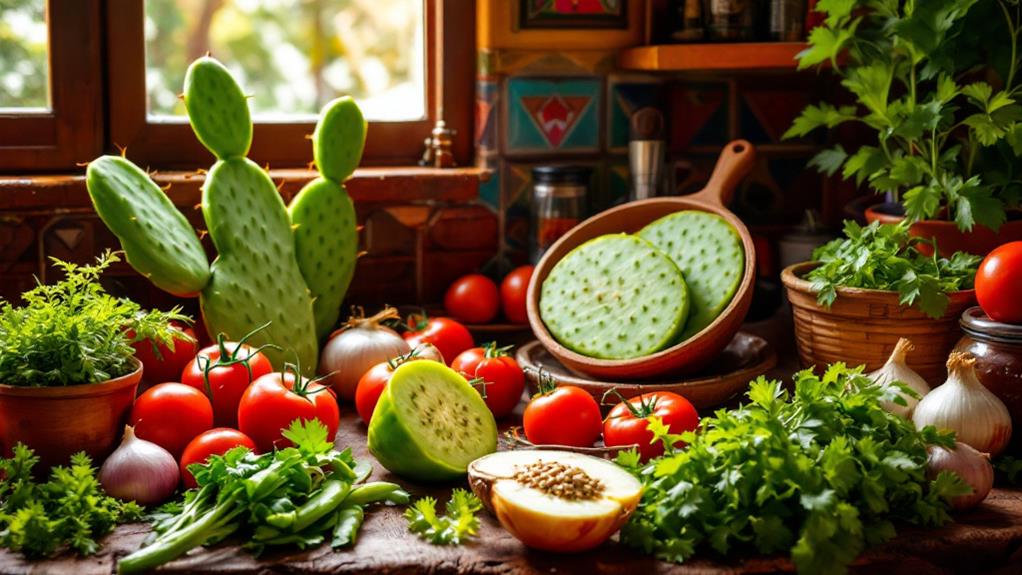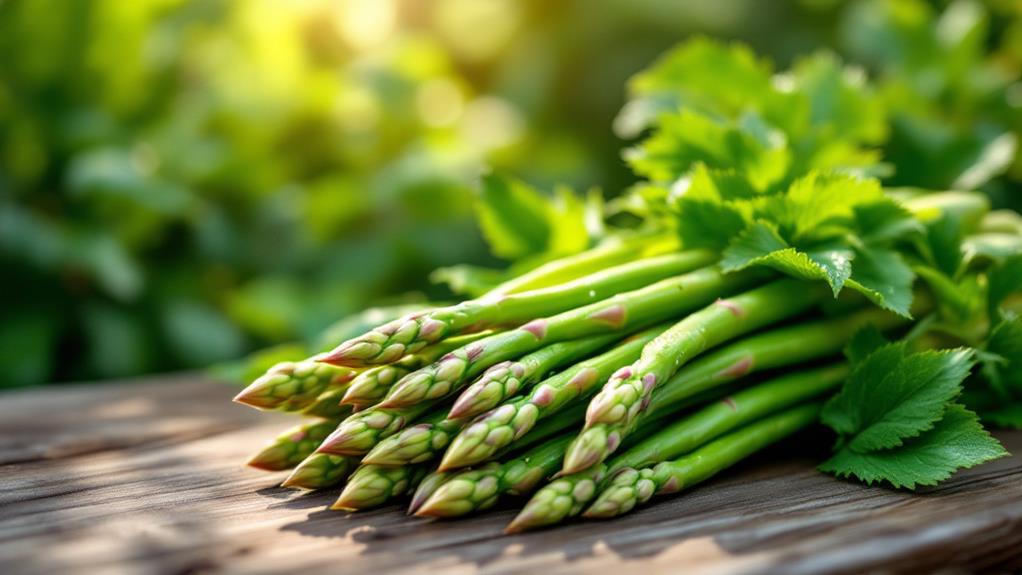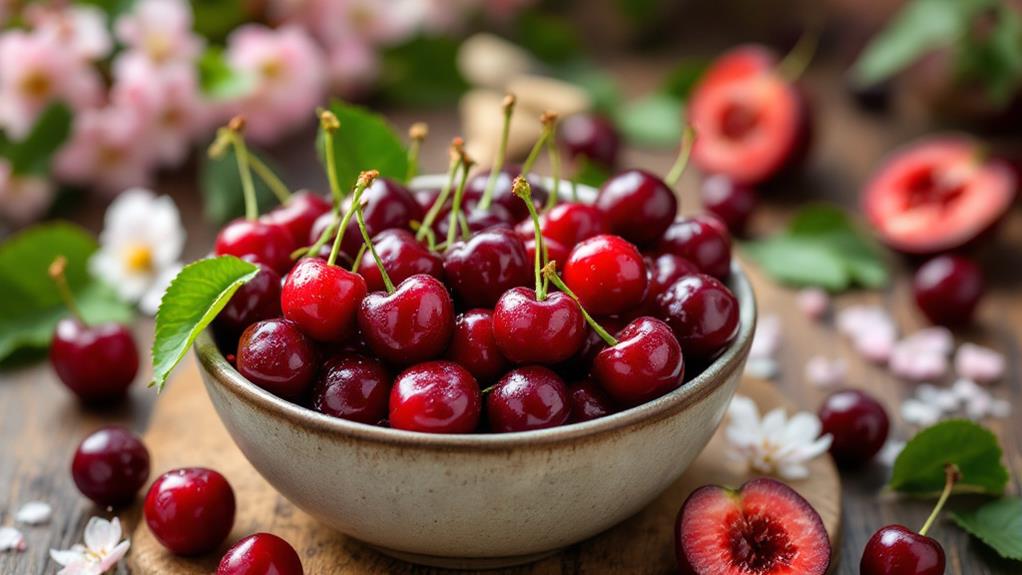Holy Hominy! The Nutritional Benefits of This Traditional Ingredient
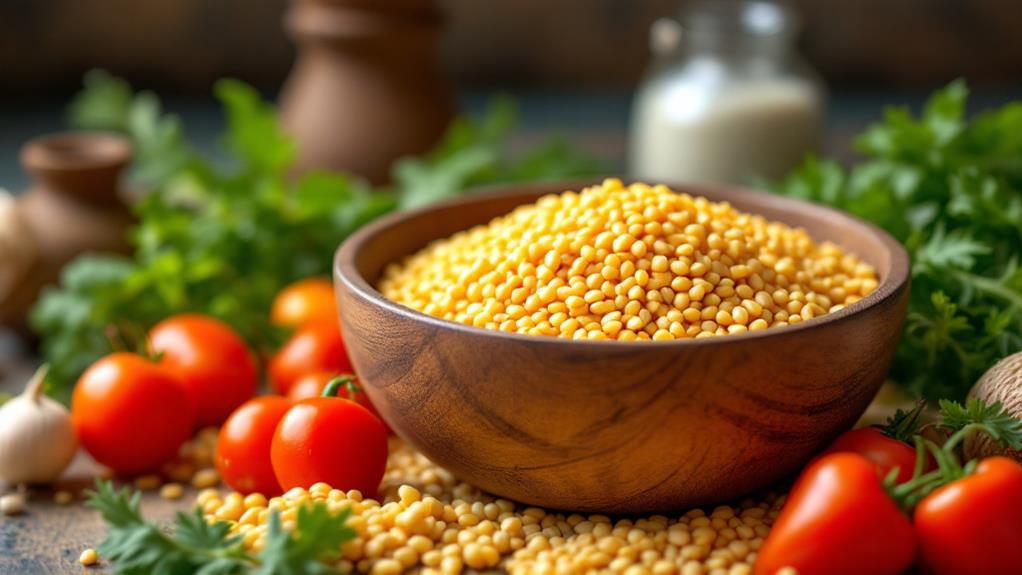
You're about to uncover why this traditional ingredient is a nutritional goldmine. Made from field corn through nixtamalization, hominy's process improves its nutritional profile by increasing the bioavailability of B vitamins like niacin. With just 178 calories per cup, it packs over 6 grams of plant-based protein and 4 grams of fiber, which supports digestion and helps you feel full. Plus, it's naturally gluten-free, making it a safe choice for anyone avoiding gluten. Regardless of your exploration of cultural foods or seeking healthy options, hominy's benefits and versatility await you with open arms.
Understanding Hominy
In order to truly appreciate the nutritional benefits of hominy, it is crucial to understand what it is and how it is made. Hominy is derived from field corn, which undergoes a process called nixtamalization. This involves soaking the corn in an alkaline solution, typically lime or lye, to remove the hull and improve its nutritional value. This process not only increases the bioavailability of B vitamins but also adds important minerals like calcium and iron, transforming hominy into a more nutritious option than untreated corn.
Hominy is available in several forms, including dried hominy and canned hominy. When working with dried hominy, you'll need to soak and cook it for several hours, while canned hominy is pre-cooked and ready to use after a quick rinse. As a source of plant-based protein, hominy fits well into a variety of diets, serving as a versatile and filling staple ingredient.
Rooted in the culinary traditions of Indigenous cultures for over 3,500 years, hominy remains a timeless ingredient. Its three main varieties—white, yellow, and blue—each offer distinct flavors and textures, making it a staple in diverse culinary applications.
Nutritional Advantages
Having examined what hominy is and how it's made, let's focus on its impressive nutritional benefits. Hominy is a powerhouse of nutrition, starting with its low calorie count—just about 178 calories per cup. This makes it a smart choice if you're watching your calorie intake. But that's not all; hominy is packed with over 6 grams of plant-based protein per cup, which helps in muscle repair and growth. If you're looking for a way to increase your fiber intake, hominy also delivers. With approximately 4 grams of fiber per cup, it meets around 17% of your daily needs, promoting digestive health.
The nixtamalization process that hominy undergoes improves the bioavailability of crucial B vitamins, particularly niacin, which plays a key role in energy metabolism. This process not only makes hominy more nutritious but also more digestible. Significantly, hominy is naturally gluten-free, making it a safe and healthy option for those with celiac disease or gluten intolerance. Derived from corn kernels, hominy offers all these benefits while fitting seamlessly into a variety of diets. Regardless of whether you're focusing on calories, protein, or fiber, adding hominy to your meals can be a deliciously smart choice.
Cultural Significance

Few foods carry the deep-rooted cultural significance of hominy. As a dietary staple for over 3,500 years, its history is intertwined with the lives and traditions of many indigenous communities. Hominy's presence in Native American culture extends beyond nourishment; it plays a crucial role in traditional rituals and festivals, reflecting ancient agricultural practices that have been passed down through generations.
In Mexican food, it's impossible to overstate hominy's importance. It's the key ingredient in pozole, a rich, celebratory stew that graces tables during special occasions and holidays, reinforcing its cultural significance. But its influence doesn't stop there. Hominy's adaptability is evident in Southern U.S. cuisine, where it shines in dishes like grits, highlighting its versatility and the cultural exchange within American food traditions.
Consider these key points:
- Historical Roots: Hominy's use dates back to ancient Central American civilizations.
- Symbolic Role: It featured in the initial Thanksgiving meal, marking its integration into American food traditions.
- Cultural Practices: Its role in traditional rituals reflects deep agricultural practices.
- Cross-Cultural Influence: From Mexican pozole to Southern grits, hominy bridges diverse culinary worlds.
Hominy isn't just a food; it's a symbol of cultural unity and historical resilience.
Culinary Applications
Exploring the culinary applications of hominy reveals its impressive adaptability in a variety of dishes. As a key ingredient in traditional Mexican pozole, hominy combines seamlessly with meat and spices, highlighting its cultural significance and versatility. This corn-based ingredient doesn't just stop there; it's a staple in Southern U.S. cuisine too. Ground into grits, hominy transforms into a savory side dish or breakfast option, showcasing its ability to adapt to different culinary contexts.
Hominy's mild flavor and unique texture make it a fantastic thickening agent for soups, stews, and casseroles. It absorbs the flavors of accompanying ingredients, enhancing the complete dish. Pair it with beans, and you've got a hearty, earthy combination perfect for comfort foods. This duo is a demonstration of hominy's role in creating satisfying meals that warm the soul.
Don't be afraid to experiment with hominy in your cooking. Its versatility allows you to incorporate it into breakfast skillets, frittatas, or even salads. Regardless of whether you're aiming for a traditional recipe or something creative, hominy's culinary potential is vast. Let it inspire your next dish, and enjoy the savory and adaptable nature it brings to your table.
Health Considerations
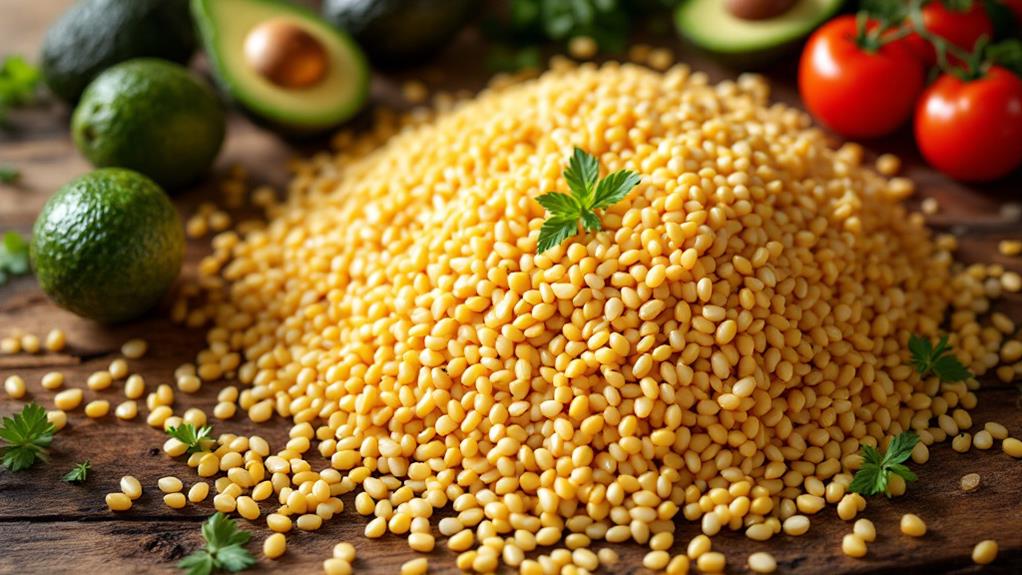
While hominy impresses in the kitchen with its versatility, it also showcases numerous health benefits that make it a smart choice for your diet. For starters, hominy is low in calories, sugar, and fat, aligning perfectly with a balanced diet. This makes it an excellent option if you're watching your weight or simply aiming to eat healthier. Its naturally gluten-free nature means it's safe for those with celiac disease or gluten intolerance, allowing you to enjoy it without worry.
The process of nixtamalization not only enriches hominy's flavor but also improves its nutritional profile. This process increases the availability of B vitamins, especially niacin, which plays a significant role in energy metabolism. Hominy is also packed with dietary fiber, promoting digestive health and keeping you feeling full longer.
Here's how hominy supports your health:
- Low Calories: Helps maintain a balanced diet.
- Gluten-Free: Suitable for gluten-sensitive individuals.
- Rich in B Vitamins: Nixtamalization increases niacin for energy.
- High in Dietary Fiber and Protein: Aids digestion and muscle repair.
Incorporating hominy into your meals can elevate your intake of vital vitamins and minerals, supporting general health and well-being.
Purchasing Tips
When you're in the market for hominy, choosing the right product can improve both your culinary experience and your health. Start by considering if canned or dried hominy suits your needs. Canned hominy is perfect for quick meals, offering convenience without the lengthy soaking and cooking that dried hominy requires. However, pay attention to the can's condition. Confirm it's undamaged and primarily contains hominy with minimal additives. Check the expiration date to guarantee freshness.
For those interested in dried hominy, prioritize quality by selecting reputable brands. Look for whole kernels that are free from discoloration or mold. This guarantees you're getting a product that's been adequately nixtamalized, a process that boosts nutritional value and texture. Unlike sweet corn, hominy's unique preparation method can raise traditional recipes that require a longer cooking process.
Reading labels is essential for both types. Verify the product meets your dietary needs, especially regarding sodium and preservatives that could affect your health. Understanding the distinction between hominy and sweet corn will guide your purchasing decisions, helping you choose the best option for your recipes and wellness goals.

